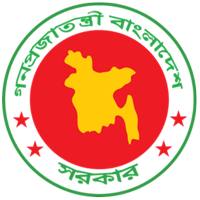For A Healthier Generation: South Asia Achieves Record-High Childhood Immunisation in 2024
In 2024, South Asia reached a historic milestone — protecting more children from life-threatening diseases than ever before. According to new data from the World Health Organization (WHO) and UNICEF, the region recorded its highest-ever immunisation coverage, marking a major step forward in ensuring that every child receives the protection they deserve.
“This is a proud moment for South Asia,” said Sanjay Wijesekera, UNICEF Regional Director for South Asia. “More children are protected today than ever before, thanks to tireless frontline health workers, strong government leadership, and the unwavering trust of families.”
In 2024, 92% of infants in South Asia received their third dose of the Diphtheria, Tetanus, and Pertussis (DTP) vaccine — a key global indicator of immunisation success. This marks a 2 percentage point increase from the previous year, showing how governments across the region have prioritised routine immunisation programs. The number of children receiving their first dose of DTP also rose from 93% to 95%, surpassing pre-pandemic levels.
Equally encouraging, the number of zero-dose children—those who have not received any vaccines—fell sharply by 27%, from 2.5 million in 2023 to 1.8 million in 2024. Behind these figures are years of strong government investment, coordinated campaigns, and dedicated health workers ensuring that even children in hard-to-reach communities are not left behind.
Several countries made standout progress. India reduced its number of zero-dose children by 43% in just one year, while Nepal cut its number by 52%. Pakistan achieved its highest-ever DTP3 coverage at 87%, reflecting improved accessibility and community engagement.
The region also saw strong gains against measles. In 2024, 93% of infants received the first dose of the measles vaccine, and 88% received the second dose. Reported measles cases dropped by 39%, from over 90,000 to about 55,000 in one year — showing how effective routine immunisation can be in preventing outbreaks.
Behind these achievements lies a shared vision of health equity. Governments have strengthened policies, invested in vaccine supply chains, and expanded community outreach. Health workers—most of them women—have played an indispensable role in gaining community trust and reaching the most vulnerable families.
Dr Thaksaphon Thamarangsi, Director of Programme Management at WHO South-East Asia, said, “It is heartening to see the region reach the highest-ever immunisation rates. We must build on this momentum and reach every child with these lifesaving vaccines.”
Bangladesh continues to shine in South Asia’s immunisation success story. Through its Expanded Programme on Immunization (EPI), the country ensures that children receive essential vaccines such as BCG, Pentavalent, OPV, PCV, and MR, maintaining one of the highest routine coverage rates globally. These consistent achievements reflect the nation’s strong commitment to reducing Zero-Dose (ZD) and Under-Immunised (UI) children.
As South Asia celebrates this remarkable achievement, the focus remains clear — sustaining progress, strengthening health systems, and ensuring that every child, in every community, receives the protection of routine immunisation. Together, the region is proving that with partnership, innovation, and persistence, every dose counts—and every child can grow up safe, healthy, and full of potential.
Reference:
South Asia immunizes a record-high number of children in 2024 [Internet]. Who.int. [cited 2025 Oct 19]. Available from: https://www.who.int/southeastasia/news/detail/15-07-2025-south-asia-immunizes-a-record-high-number-of-children-in-2024









